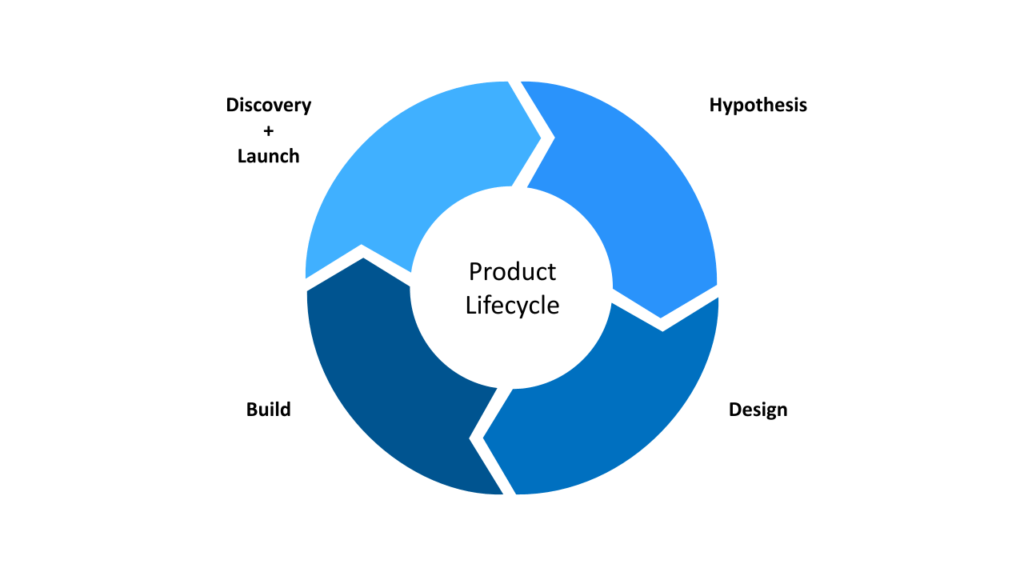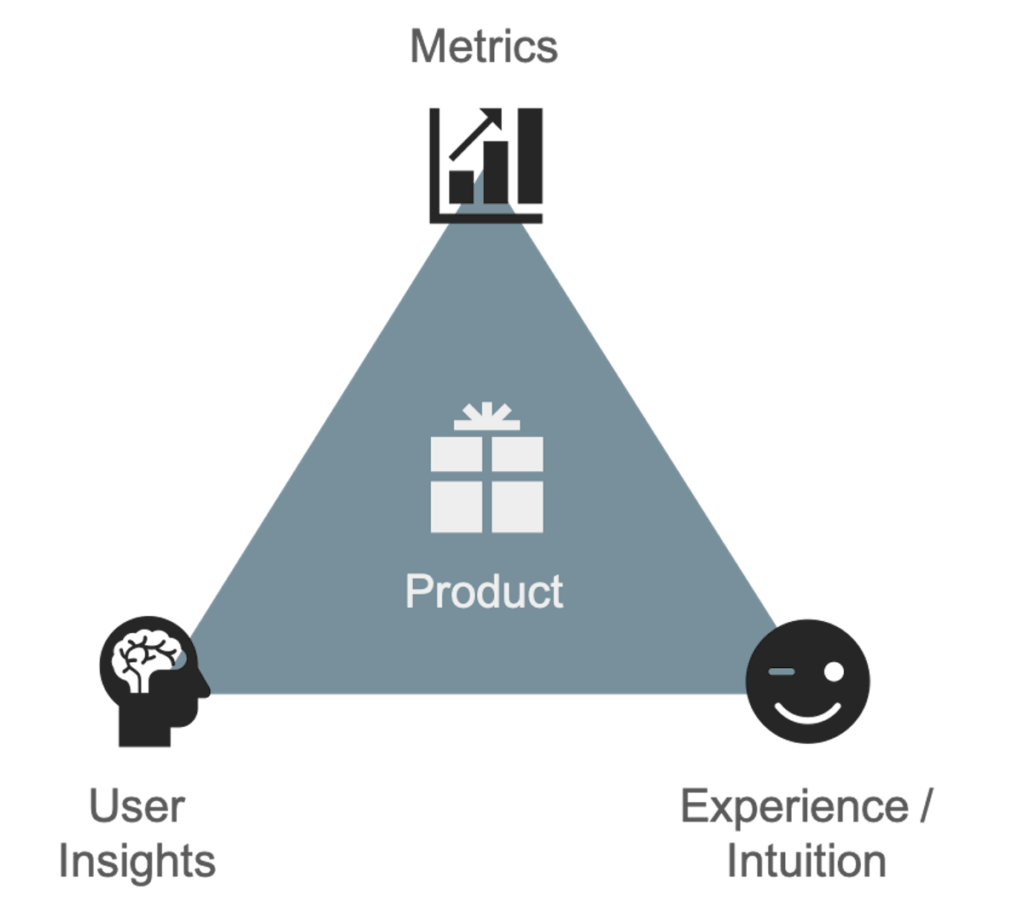Three is not enough. The product manager, designer and tech lead are no longer enough and why we should include the product analyst as a permanent part of the product team.
Data-driven product development is a pillar of product management. I consider myself data-driven, and I bet you do too. We make decisions based on the data that is available to us. But are we taking advantage of all the opportunities?
Contents
The product team
In modern product management, we describe a functional or ideal team consisting of a product manager, a designer, a tech lead and the developers needed depending on the product type. If we look at the familiar squad models, we also include marketing. One role we rarely find is the product analyst. If we look for a role description, we find answers like this one from comeet.com:
Product analysts perform market research and analyze market data, identifying consumer behaviors and trends. They make recommendations and provide launch strategies based on their analyses to increase firm profitability. Product analysts monitor product performance and recommend alterations to meet sales forecasts.
Cristina Burns, comeet.com
To me, this describes a role that is too far away from the action, the team. In my opinion, we need to adjust this definition a bit. The product analyst role should become part of every product team.
Data-driven vs basic product work
We believe that data-driven means to make decisions based on user research and A/B experiments. While this is true, it is also only half the truth. Running experiments is an essential task when we try to ship a new feature or improve an existing one. It gives us confidence in the results of our work, and we can show the impact accordingly in the company. In addition, experiments help the product team to learn. They create insights for the product manager and the designer to adapt the product.

Let’s take a step back and look at what happens before the actual testing. Frameworks like the “Product Lifecycle” divide product work into specific phases. When using A/B experiments, we have a hypothesis that we want to prove or disprove. Data-driven in this phase means: we decide whether the feature works for the masses.
Running experiments and making decisions based on the resulting information is part of the essential product work, our daily bread and butter. We take users’ opinions into account when doing qualitative research and use quantitative feedback like experiments to confirm our hypotheses. Is that already data-driven? Discovery precedes hypothesis. But what exactly is part of discovery, and who of us would claim actually to carry this out in our day-to-day business?
Am I data-driven?
With the ongoing debate about cookies and tracking user behaviour, we need to think about why we collect so much data in the first place. We tend to record every user action in our products. It seems essential to us to know every little thing about the user. However, are we using all this data and do we know how to use it to benefit our users? I don’t think so.
Before I started my career in product management, I was a software developer for fifteen years. I worked a lot with databases, and I feel very comfortable writing SQL queries. Why am I sharing this? In my introduction, I wrote that I consider myself data-driven. On paper, I even have the skills to work with data. But that’s not enough.
The boundaries
If you look at the role model of the product manager, you can’t get past Marty Cagan:
In order to solve for value and viability, the competent product manager must skilled in the following four critical areas:
https://svpg.com/the-product-manager-contribution/
1. Deep Knowledge of the Users and Customers
2. Deep Knowledge of the Data
3. Deep Knowledge of the Business
4. Deep Knowledge of the Industry
And under “Deep Knowledge of the Data”, it says:
The product manager needs to be expert on how the product is being used (from the user analytics tools), and also sales (from the sales analytics tools), and how this is changing over time (typically from the data warehousing tools). The product manager may have a data analyst or data scientist to assist, but this knowledge is not something that can be delegated.
https://svpg.com/the-product-manager-contribution/
We know that these four areas are vast and challenging to manage, especially when we think of the myriad of administrative tasks we all have to do. For example, we are writing tickets and preparing the team’s sprints.
If we look at the reality in companies, we rarely have an optimal data pool. Not only the circumstance of the new data protection laws make analytics more and more difficult. Checking Google Analytics is also not enough in most cases, as we spread data across several systems many times. If we use mobile apps, the app stores contain data about installs and campaigns. CRM systems for emailing, push notifications, performance marketing tools, Google search and much more. Different data sources that we need to connect make it hard to get deep insights in a simple way. Do you have all your data in one place? Does your data warehouse offer a self-service tool for analysis?
The opportunities
In recent years, digital product management has improved the inclusion of experience design. We do user research and rely on experimentation. So far, so good. It’s time for another step, and I call for the inclusion of the product analyst.

We have an infinite amount of data that can provide us with countless insights. Often data analytics is used to validate existing user research. But we can also flip this around and use analytics as a starting point and validate it with qualitative user interviews.
For example, we started with a simple question in our recent engagement efforts and created a data analysis. In addition to data insights, we conducted user interviews and surveys to prove or disprove our information. The data tells us what is happening but not why.
We are now taking different approaches to developing our product. On the one hand, we work with user interviews, prototypes and surveys. The product designer plays an essential role in combination with user research. We can determine the how and why behind the behaviour.
On the other hand, we use data analysis to point out deeper patterns of behaviour and discover anomalies. We then use user research methods or run A/B experiments to incorporate our findings into the product.
For this, our product analyst provides the suitable methods and the necessary knowledge to analyse the data.
A product manager does not create the design, nor do we write the code. Let’s get used to delegating the data analysis as well.
Here is my role description for our product analysts:
Product analysts bring together the various existing data sources and develop in-depth evaluations of user behaviour. With the help of their analyses, they introduce ideas into product development that support the product manager and product designer in deciding on changes and new developments. They help the product team understand their work and achieve their goals.
Photo by Franki Chamaki on Unsplash
